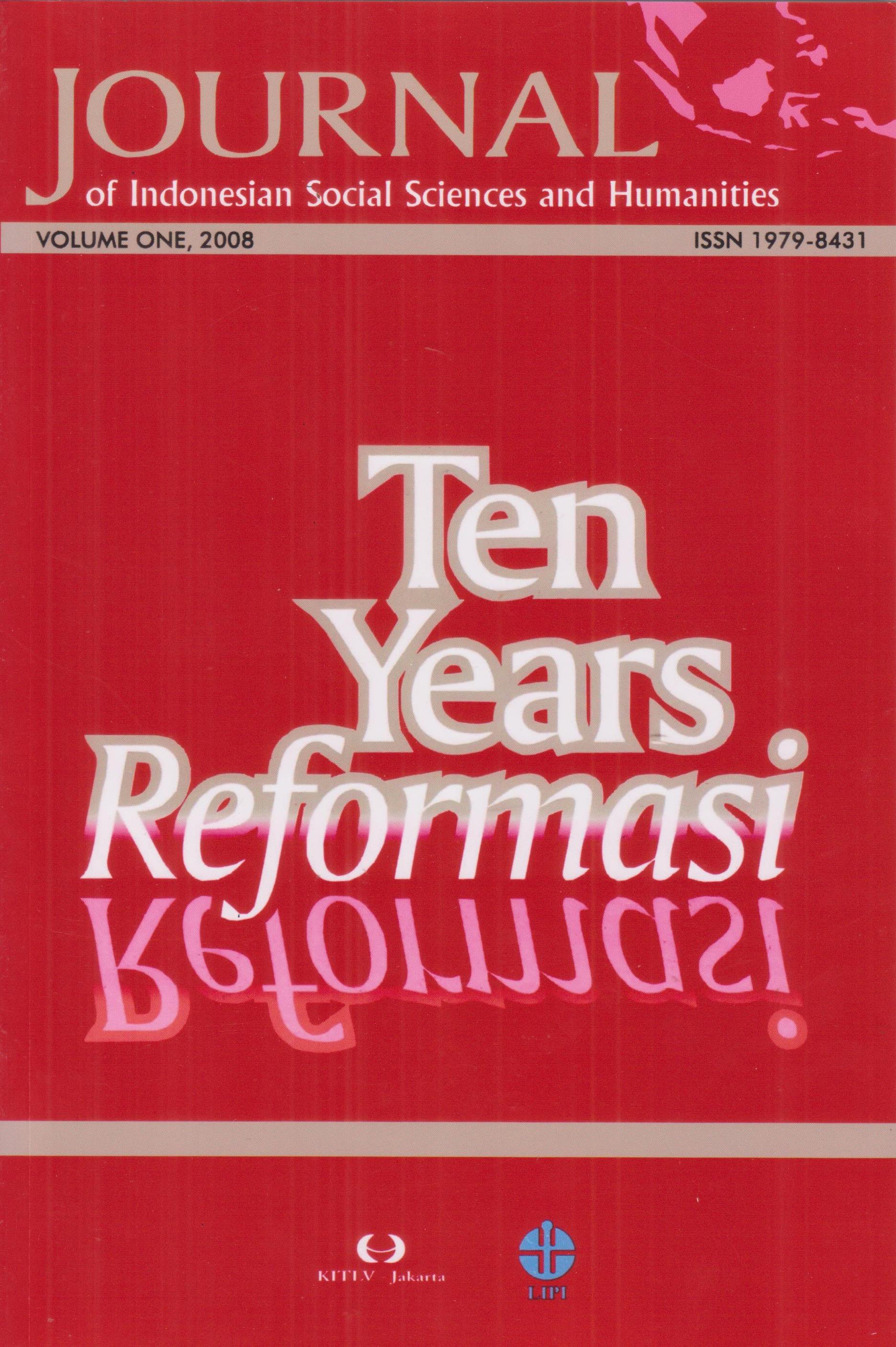Indonesian Theatre Ten Years after Reformasi
Abstract
Theatre contributed actively to the Reformasi movement of 1998 in Indonesia, as shows were staged that united students, NGO workers, artists and others in shared criticism of the Suharto regime and aspirations for change. Modern Indonesian-language theatre has a long history of political involvement. Developed among students in the Dutch colonial school system, its aim was helping create the Indonesian nation. This led to friction with other political groups and with state authorities. During the New Order regime, performances conveyed criticism that could not be expressed through other channels. In the post-Suharto era, however, when political criticism can be freely expressed and there is no united opposition movement to work with, theatre necessarily connects in a different way to its social context. In Central Java, where the writer’s research has been based, contemporary theatrical performances are characterised by a shared focus on local identity and community. ‘Local’ culture is sometimes interpreted as the indigenous cultural forms of an area, but more often as the mixed local-global culture that residents practise today. The term ‘community’ is used to refer to immediate neighbours and to people with shared interests and experiences, who both watch and actively perform in plays. Such developments in theatre are clearly shaped by the heightened awareness of local identity fostered by regional autonomy and by the ideology of participatory democracy. But how do theatrical activities connect to other social forces and with the structures of the regional autonomy system? Is there any sense of future direction in the current vibrant celebration of local identity? In what ways does theatre in other regions reflect local social conditions? These important questions remain to be explored.
References
Bain, Lauren. 2000. ‘Confused? Some Directions in Post-New Order Theatre’. Inside
Indonesia. No. 64. October–December.
--------. 2005. ‘Performances of the Post-New Order’. Unpublished PhD thesis. School
of Asian Languages and Studies: University of Tasmania.
Bauman, Zygmunt. 2000. Liquid Modernity. Oxford: Polity Press.
Bodden, Michael. 2007. ‘“Tradition”, “modernism” and the struggle for cultural hegemony in Indonesian national art theatre’. Indonesia and the Malay World. Vol. 35. No. 131. March: 63-92.
Clark, Marshall. 1999. ‘Cleansing the Earth’, in Edward Aspinall, Gerry van Klinken and Herb Feith (eds). The Last Days of President Suharto. Clayton, Victoria: Monash Asia Institute, Monash University, pp. 37-40.
Hatley, Barbara. 1993. ‘Constructions of “Tradition” in New Order Indonesian Theatre’, in Virginia Matheson Hooker (ed.). Culture and Society in New Order Indonesia. Kuala Lumpur, Singapore, Oxford: Oxford University Press, pp. 48-69.
---------.1999. ‘Cultural Expression and Social Transformation in Indonesia’, in Arif Budiman, Barbara Hatley and Damien Kingsbury (eds). Reformasi: Crisis and Change in Indonesia. Clayton, Victoria: Monash Asia Institute, Monash University, pp. 267-286.
---------. 2008. Javanese Performances on an Indonesian Stage: Contesting Culture, Embracing Change. Singapore: Asian Studies Association of Australia in association with NUS Press.
Iskandar, GB. 2007. ‘Wayang Air Ki Slamet Gundono’. skAnA 3. 9.
Lindsay, Jennifer. 2005. ‘Performing in the 2005 Elections’, in Margaret Kartomi (ed.). The Year of Voting Frequently: Politics and Artists in Indonesia’s 2004 Elections. Clayton, Victoria: Monash Asia Institute, Monash University.
---------. 2008. ‘A New Artistic Order?’ Inside Indonesia. No. 93. August–Oct.
Lucas, Anton. 1999. ‘The Mayor Who Fell Down the Well’. Inside Indonesia. No. 59. July-September: 11-12.
Muhamad, Anis Ba’asyin. 2006. ‘Ngobrol Bareng Anak Wayang Indonesia’. skAnA 1: 33-8.
Rini, Hindra Setya. 2006. ‘Kukuh Baku’. skAnA 1: 8-14.
Downloads
Published
Issue
Section
License

This work is licensed under a Creative Commons Attribution-NonCommercial-ShareAlike 4.0 International License.
Authors who publish with this journal agree to the following terms:
1. Authors retain copyright and grant the journal right of first publication with the work simultaneously licensed under an Attribution-ShareAlike 4.0 International (CC BY-SA 4.0) license. This license allows others to remix, adapt, and build upon the work, as long as they credit the author and license their new creations under the same terms.
2. Authors may enter into separate, additional contractual arrangements for the non-exclusive distribution of the journal’s published version of the work (e.g., posting it to an institutional repository or including it in a book), provided there is an acknowledgment of its initial publication in this journal.
3. Authors are permitted and encouraged to post their work online (e.g., in institutional repositories or on their personal website) prior to and during the submission process, as this can lead to productive exchanges and increase citations of the published work (See The Effect of Open Access ).


















